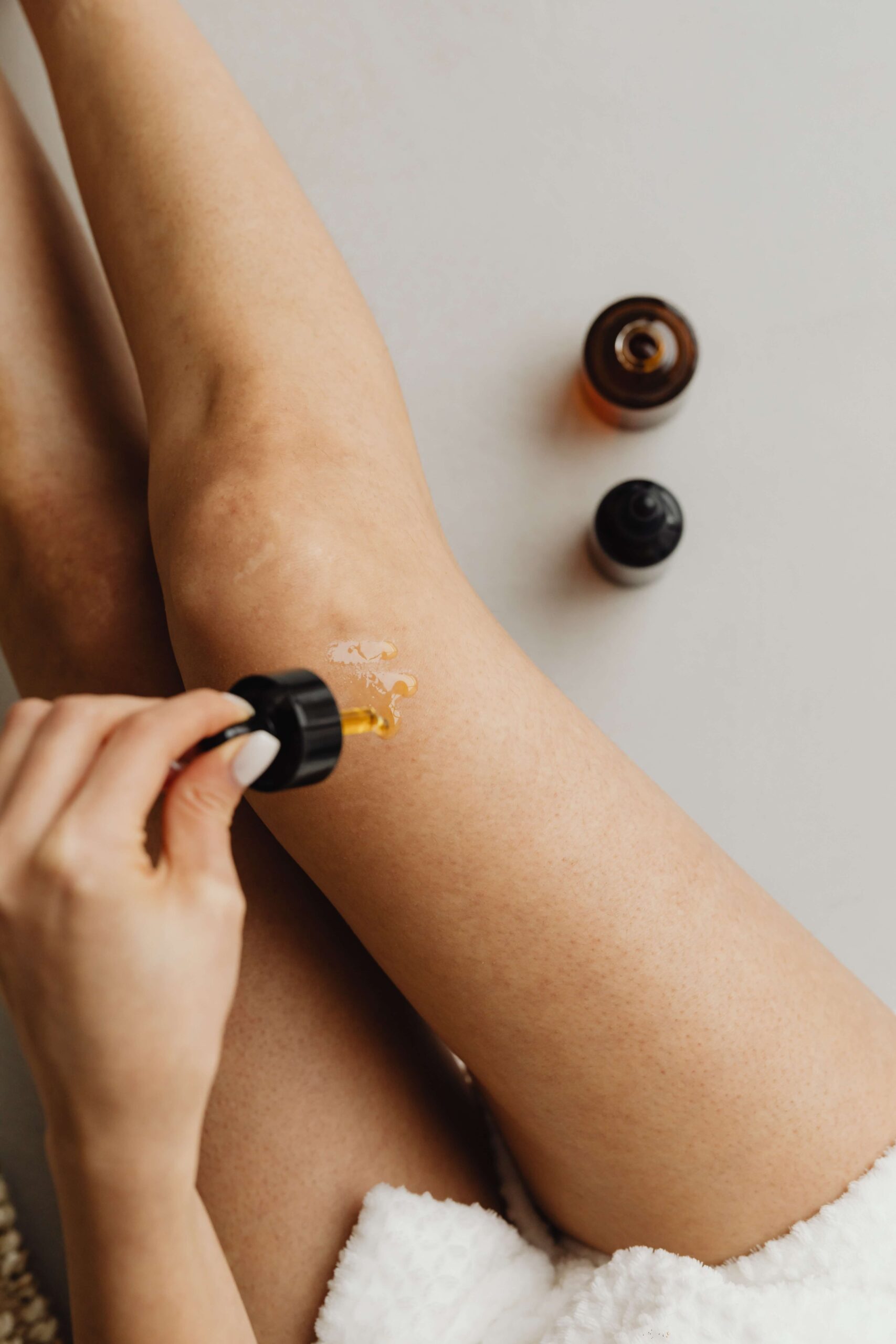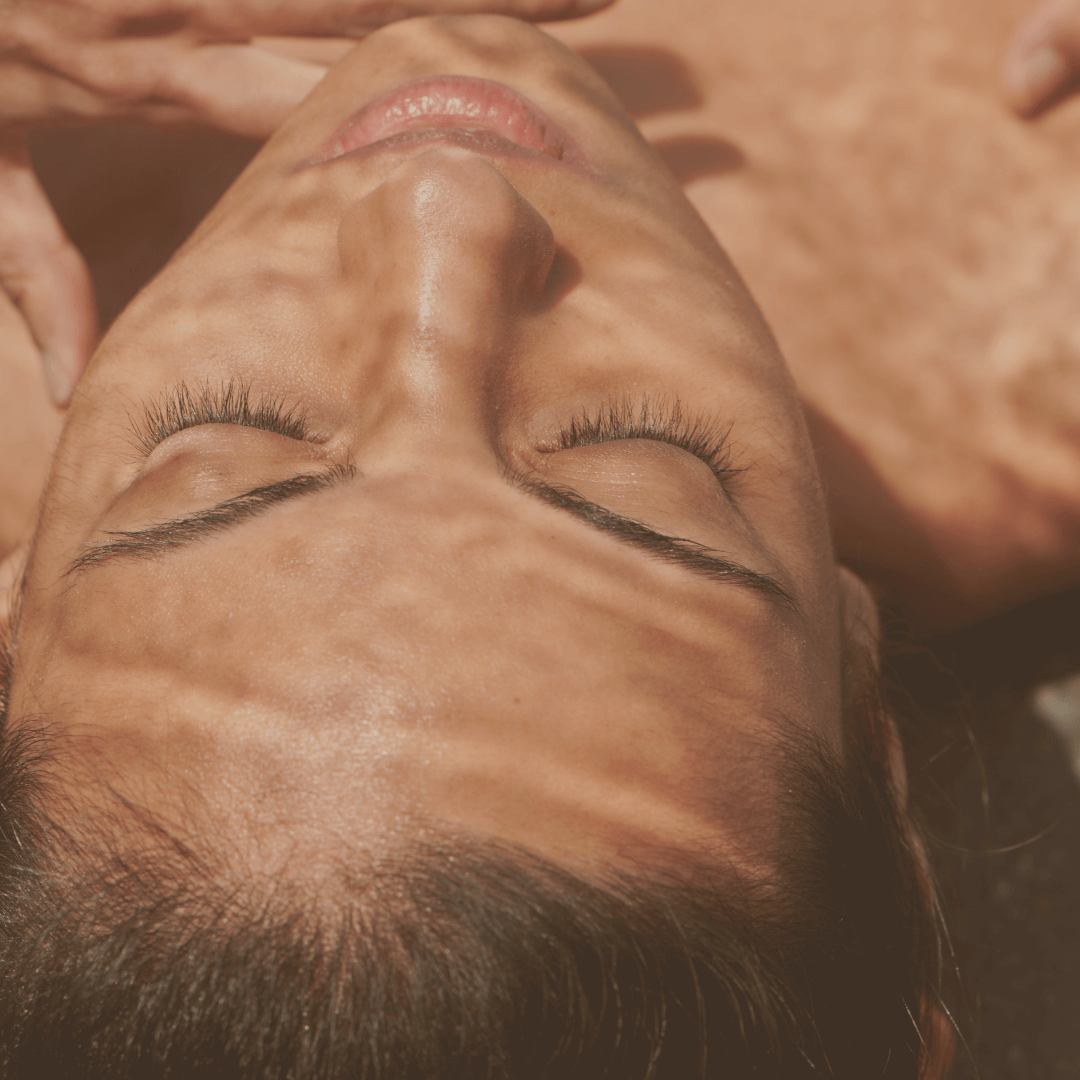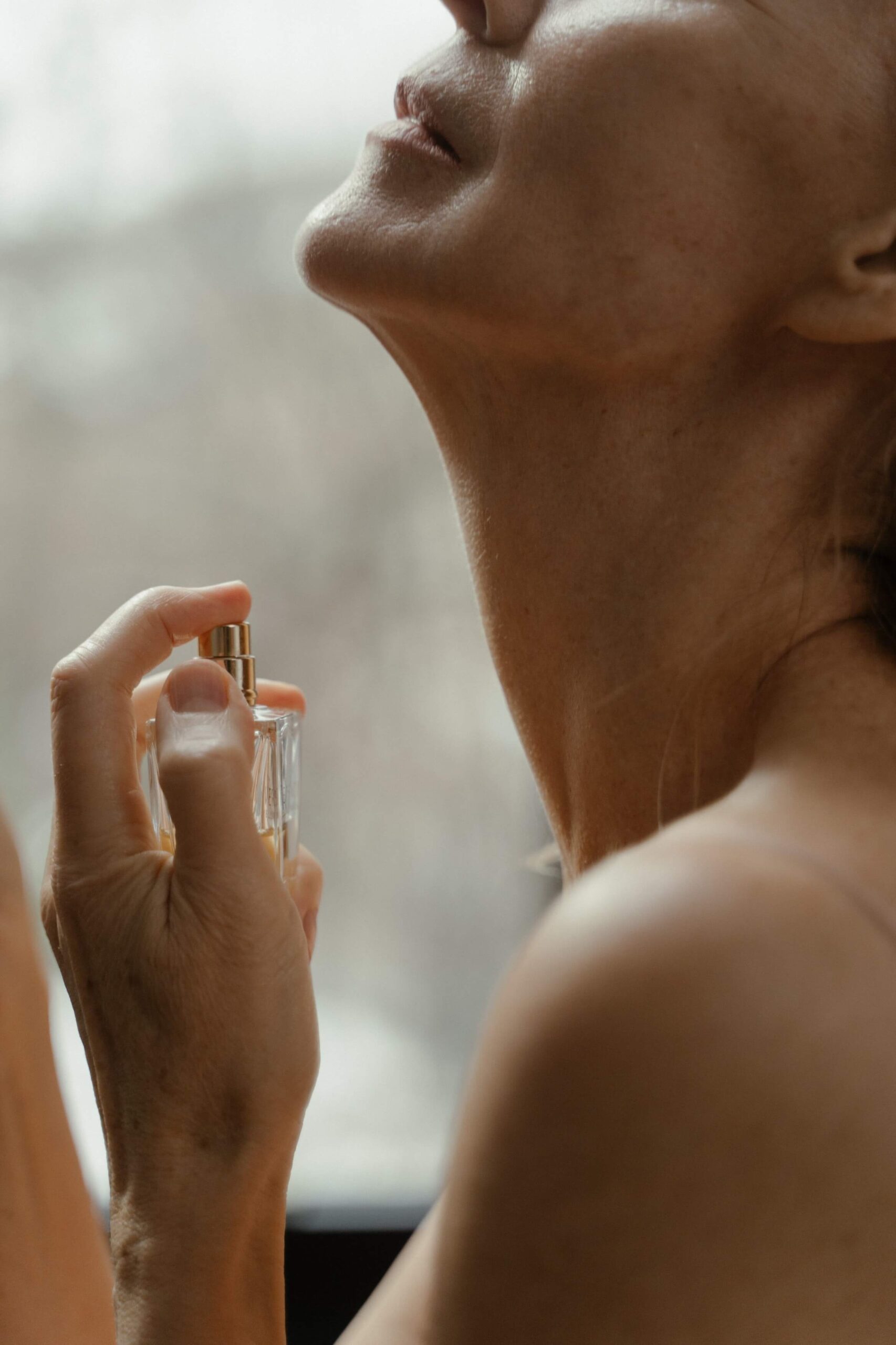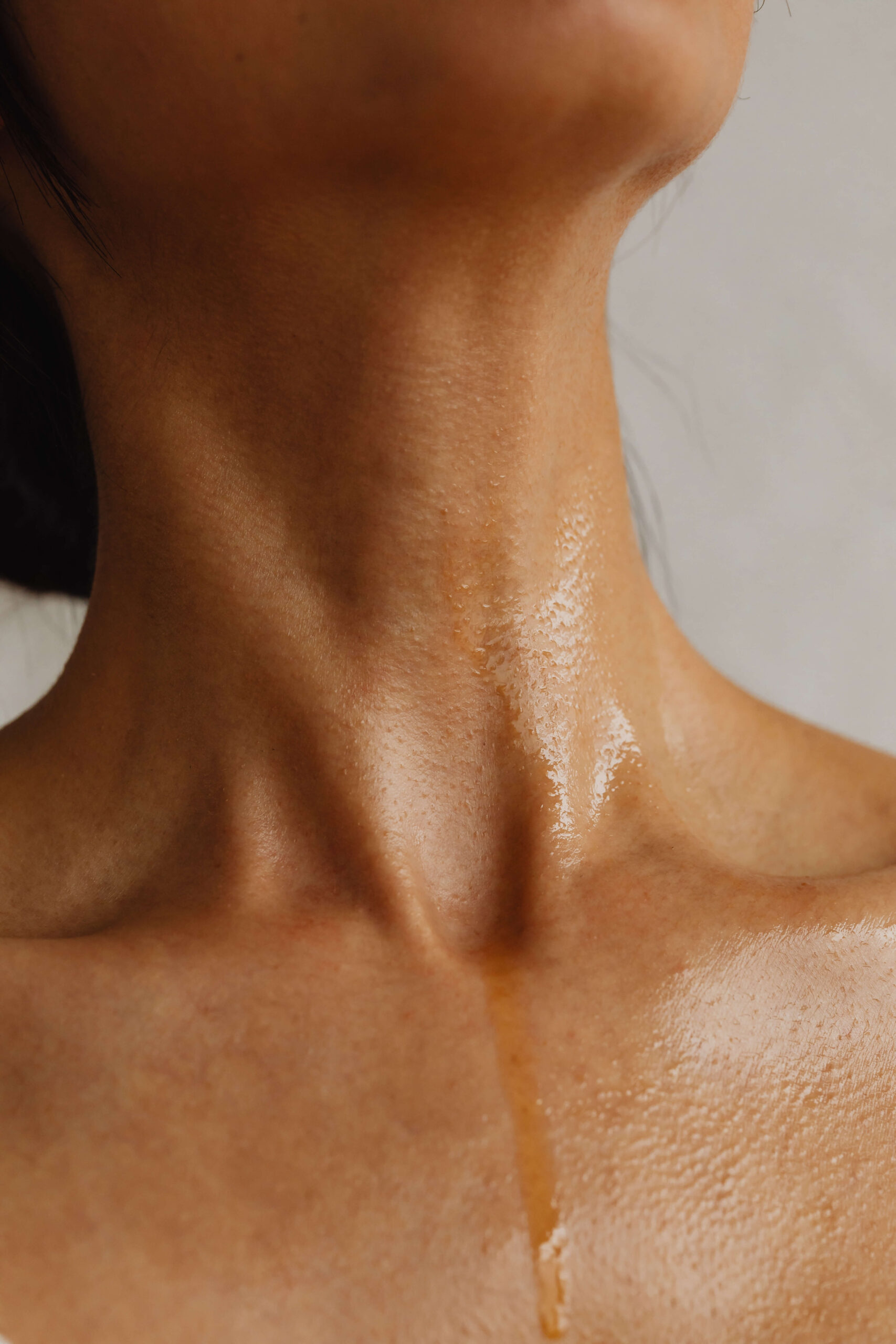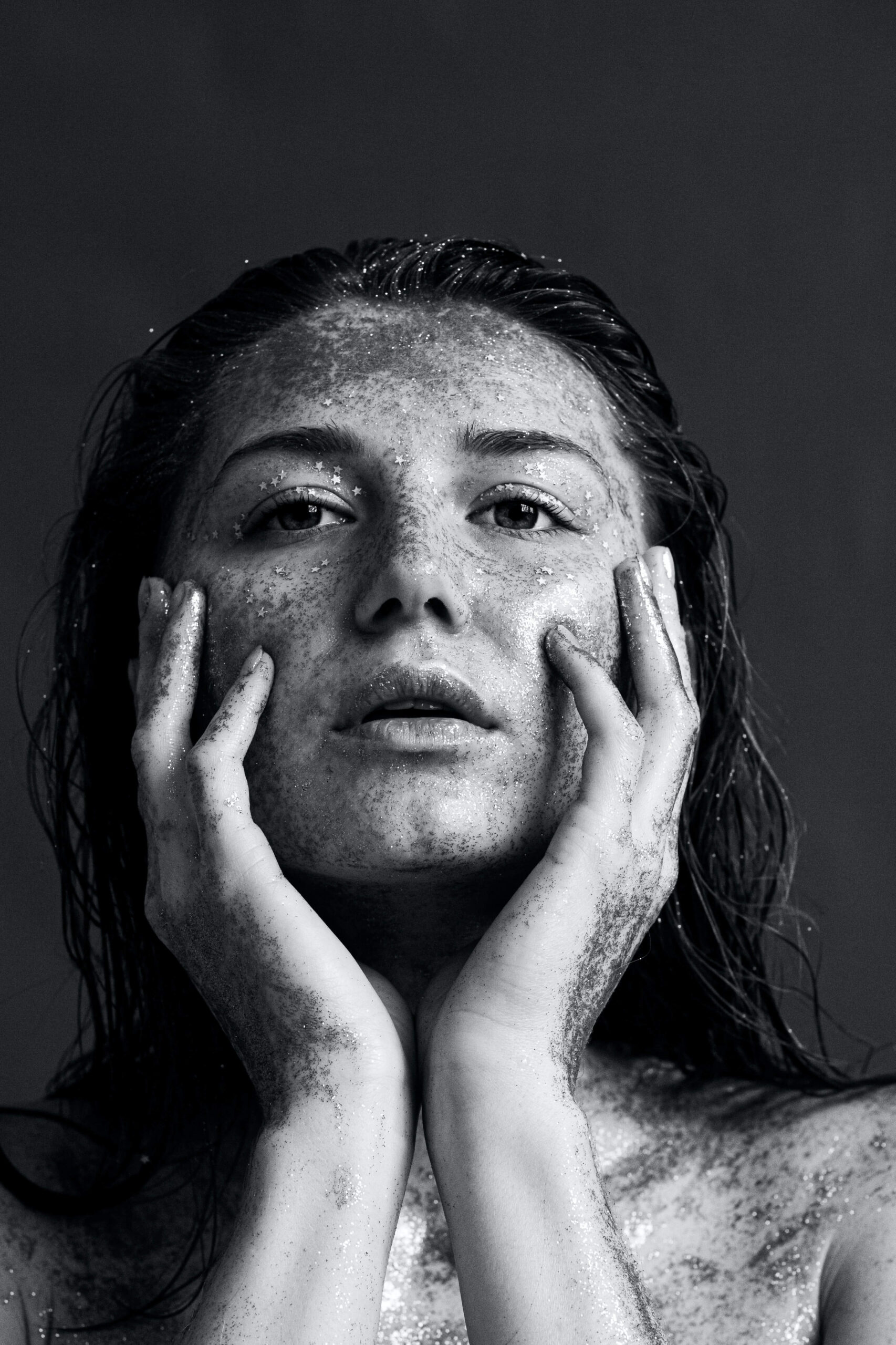Self-care is about spending time on things that make you feel better, physically and mentally. There are numerous benefits of practicing self-care, including a lower risk of illness, increased energy, and better stress management.
One of the best ways to shower yourself with love is with massage. I’m a big proponent of massage, especially face massage. There are a bunch of different massage techniques, like gua sha and inner-mouth buccal facial massage and beyond. For this post, I want to focus on Abhyanga massage.
Abhyanga is a type of massage that uses warm oil. It’s one of my favorite types of massage, for many reasons, including its ability to provide feelings of stability, warmth, and comfort. But before we get into everything I love about Abhyanga, let’s take a closer look at what it is. Then, I’ll share how you can practice this massage technique at home!
What Is Abhyanga Massage?
Abhyanga, also known as Ayurvedic massage, is one of the most popular Ayurvedic massages. There are a few different kinds of Abhyanga, including Shiro Abhyanga (head massage), Padabhyanga (foot massage), and full-body massage.
Performing Abhyanga several times a week is a great way to restore the balance of the doshas. If you’re new to Ayurveda practices and unfamiliar with doshas, here’s a quick lesson.
Ayurveda is a system of medicine based on preventative lifestyle practices that focus on whole-body healing by connecting the body and mind to the energy, cycles, and seasons of life. In Ayurvedic medicine, the world is made up of five elements: Aakash (space), Jala (water), Prithvi (earth), Teja (fire), and Vayu (air). It’s believed that a combination of the elements creates three doshas, Vata, Pitta, and Kapha, which determine a person’s overall well-being.
Regular Abhyanga practice is especially beneficial for Vata dosha imbalances, but the Pitta dosha and Kapha dosha can also benefit from this relaxing and healing practice. What makes Abhyanga different from other types of massage is its specific series of movements, including long strokes and circular motions, as well as the use of warm, herbal oils.
As a holistic esthetician turned integrative educator, I would love to teach you more about Ayurveda and other aspects of holistic skincare and beauty. You can sign up for my unique online education course called The Minimal Beauty Collective and gain access to valuable information that transforms your skin and well-being, now and for the rest of your life.
Benefits Of Abhyanga Massage
Reduces Stress
One small study on the effects of Abhyanga on stress in healthy adults found that a single, one-hour Abhyanga massage not only lowered their stress levels but also decreased their heart rate.
Research suggests that the combination of rhythmic massage, like Abhyanga, and aromatic oil can benefit the autonomic nervous system. Stress negatively impacts the autonomic nervous system by lowering heart rate variability. The results of this particular study suggest that Abhyanga can promote relaxation and therefore greater heart rate variability.
Improves Skin
Abhyanga practitioners, myself included, have witnessed first-hand how Abhyanga can promote healthy skin. The oil used in Abhyanga massage provides the skin with the necessary nourishment, and the strokes and motions of the massage can increase blood flow to the skin and improve the skin’s texture. It can also reduce the appearance of scars, wrinkles, cellulite, and hyperpigmentation.
Promotes Lymphatic Drainage
Just about every type of massage helps to promote lymphatic drainage, including Abhyanga. A lack of proper drainage can lead to a build-up of fluid in your lymphatic system, leading to swelling and more serious conditions like lymphedema.
Through massage, pressure is applied to lymphatic vessels, which then promotes improved lymph flow.
How To Do Abhyanga Massage At Home
It’s surprisingly easy to practice Abhyanga massage at home. Before you begin, strip down to minimal clothing (or your full birthday suit!) and lay out a towel or two. I recommend using an old towel or one that you don’t mind getting covered in oil. Then, try to clear your mind and stay present.
Step 1: Warm the oil.
Warm oil is a crucial component of Abhyanga massage. It’s intended to offset the cold and dryness of Vata. Plus, it’s more easily absorbed by the skin and offers a relaxing effect.
You can use sesame oil or coconut oil, which has been used for thousands of years for Abhyanga massage, or you can use your preferred massage oil. Ideally, for Abhyanga massage, you will use a massage oil that contains healing herbs. I will share several great options later in this post.
To warm your oil, pour ½ a half cup of oil into a clean, empty squeeze or pump bottle. Then, carefully submerge the bottle in very hot water until the oil is warm.
2. With gentle but firm pressure, massage your entire body.
Apply a small amount of oil to your hands and begin massaging the crown of your head using circular strokes, then work your way downward, all the way to your toes. Staying present, massage each area of your body, using long strokes for your arms and legs, and short strokes for your face and joints. Be sure to massage your fingers and toes, as well as the soles of your feet because they house important marma points.
3. Relax and give your skin time to absorb the oil.
No matter how you feel about being covered in oil, this is a crucial step in Abhyanga massage, so don’t skip it!
Close your eyes, take deep breaths, relax, and wait 10 minutes. This will give the oil time to reach deeper, internal tissues for the maximum benefit.
4. Rinse excess oil.
A more traditional Abhyanga massage ends with a cold or cool shower to remove excess oil. This step is crucial for keeping the excess oil from clogging your pores.
If you would much rather enjoy a warm bath or shower, that’s fine too!
Best Oil For Abhyanga Massage
Sesame Oil
In ancient Ayurveda texts, you’ll find sesame oil listed as one of the most powerful herbal massage oils. It’s no wonder, given that it’s loaded with antioxidants that can dramatically improve your skin and even reverse damage.
Sesame oil is a great massage oil to use if you’re struggling with pain or inflammation. This base Abhyanga massage oil is the one I recommend using for your first Abhyanga massage.
Coconut Oil
The versatility of coconut oil never ceases to amaze me. It feels like this oil is used for everything these days, but in this instance, we’re focusing on its use as a massage oil.
Coconut oil is one of the oils used in the Ayurveda tradition. It makes a great massage oil because it nourishes and hydrates your skin and has a pleasant, tropical smell. Although I wouldn’t recommend using it on your face, it can provide your skin and hair with vitamin E and antioxidants. (Check out this post for my recommendations on massage oils for your face!)
There are numerous benefits to massaging with coconut oil, including the prevention of wrinkles and sagging skin and reduced acne scars. It’s also great for treating dry skin.
Almond Oil
Almond oil works well as an Ayurvedic massage oil because it’s easily absorbed and has a pleasant, sweet smell. It can also help treat skin conditions like eczema and provide pain relief and muscle relaxation.
If you have an elevated Kasha or Vata dosha, almond oil is a good choice. However, Pitta-dominant doshas should avoid almond oil because it can cause rashes and exasperate Pitta dosha.
Almond oil is gentle enough to be used on all skin types. It’s safe enough to use on your body and your scalp but depending on your skin type, you might want to avoid using it on your face.
Olive Oil
Olive oil is probably mostly thought of for cooking purposes, but it makes a wonderful massage oil. An Abhyanga massage with olive oil will moisturize your skin and provide relief to aching joints and muscles.
Using olive oil as a massage oil can improve blood flow, increase energy levels, and boost immunity, while also hydrating your skin and repairing sun damage. Olive oil is commonly used in Ayurvedic medicine to relieve swelling, muscle spasms, and minor aches and pains.
With numerous benefits, including noticeably healthier skin, consider making Abhyanga massage part of your self-care routine.
There are countless ways to practice self-care, but very few offer as many benefits as massage. Abhyanga massage uses warm oil and methodic movements to ease pain and relax your mind. Even if Ayurveda isn’t a regular part of your life, this practice is one worth making time for.
To discover more massage techniques and learn more about other game-changing skincare and beauty practices, head over to the blog.
